Living with Arthritis
About a year ago, I shared a post about arthritis including a video of me wearing arthritis simulation gloves while trying to do some of my everyday tasks. This activity gave me greater empathy for those suffering with severe arthritis. I’m pleased have another opportunity to partner with the Arthritis Foundation to continue to raise awareness about arthritis, while also encouraging those affected by it to raise their voice by participating in the Live Yes! INSIGHTS survey.
This post is sponsored by the Arthritis Foundation, but all my thoughts and opinions are my own.
Arthritis is a debilitating disease which is not often talked about and generally misunderstood to be “an elderly disease”. However, nearly 300,000 children in the US, suffer from arthritis, including Claire, who is 17 now but has been suffering with arthritis since she was 8 years old. I met Claire in my local community through the Arthritis Foundation, which has communities in cities and towns throughout the United States. Claire joined me to create a craft project and talk about living with arthritis.
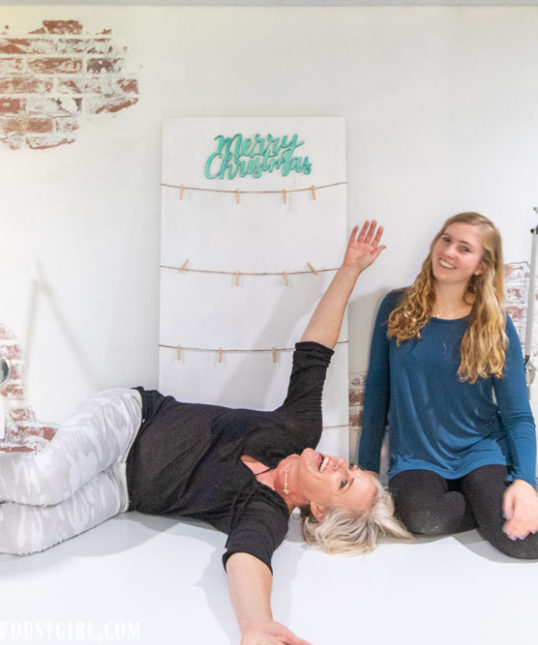
Claire
We met up with Claire and her dad at my Richwood house (because that house has an awesome craft room) to make a Christmas card holder. Madison came along to help take some photos and remember all the important conversation details –that I sometimes miss while I’m making sure everyone is having fun. We snacked, crafted and talked to Claire about how living with arthritis how has affected her.
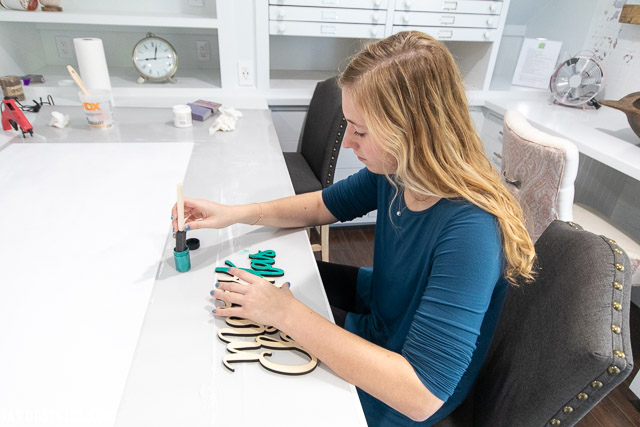
Right off the bat, I get down to business. “First we need to sand and paint the board.” I pause. “By the way, how’s your arthritis today?”
Claire laughs a little. “Um, pretty good.”
I wasn’t really sure how to go about making sure she would be able to do the craft; I didn’t want her to think I didn’t think she could do it, but I also didn’t want to assume and then have her be in pain and not tell me.
“I’ll tell you,” she says, smiling. “It’s mainly my back.”
“So no heavy lifting,” her dad chimes in.
“Alright, so I bought a bunch of little crafty stuff—we’re making an advent calendar or a Christmas card holder, whichever you like.
Claire’s dad laughs. “Sounds great.”
“I don’t know how crafty you are,” I say to Claire, “so we can do as much or as little as you want.”
“I’m pretty crafty.”
“Oh, sweet! Then just go to town,” I instruct.
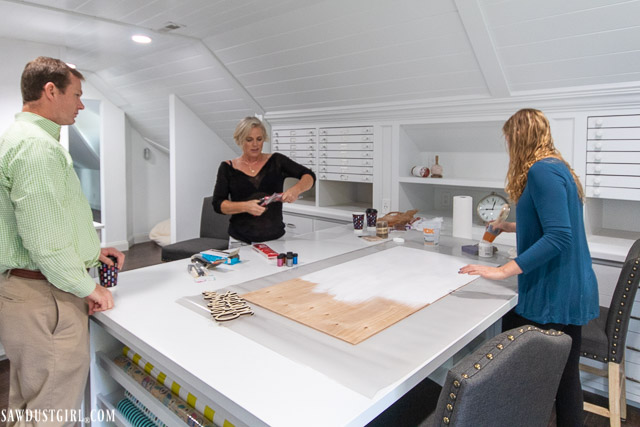
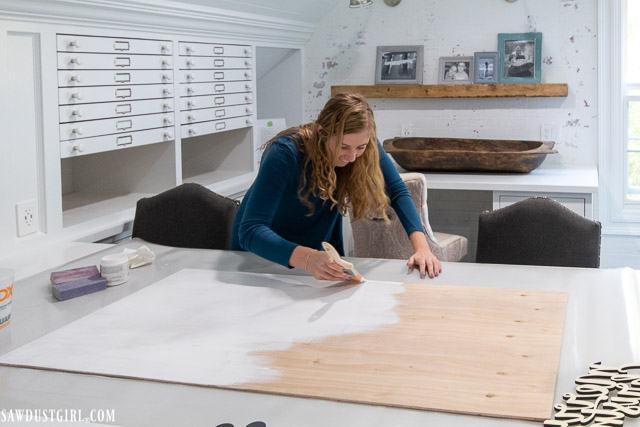
We talk a little about when Claire was diagnosed with arthritis. Her joint pain started when she was 8, but her pediatrician thought it was just growing pains. Then, in 6th grade, the pain in her wrists and ankles was getting worse, so she was referred to see an orthopedic doctor. They tried some medication and physical therapy, but the pain flared up again. Fast forward a little when Claire’s parents took her to see a pediatric rheumatologist. The first time she saw her, Claire got an MRI of her ankle, but nothing showed up. Then, over the next several months, her pain got worse with an added not-bonus of fatigue; she also had severe lower back pain on top of her joint pain. They went back to the rheumatologist and, after MRIs of her wrists and SI joints, they finally had an answer. The MRIs showed joint damage and fluid, and the doctor was able to diagnose Claire with Ankylosing Spondylitis and Juvenile Idiopathic Arthritis. After 6 years, Claire and her family had an answer to the pain she had been dealing with, and they could begin to look at how to manage her condition.
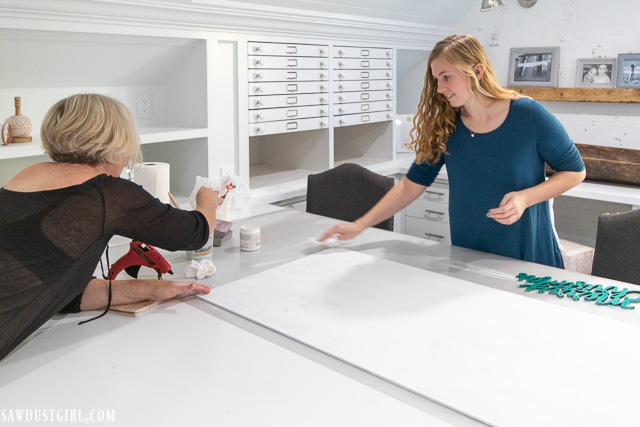
“So what do you do when it flares up?” I ask her.
“Well, I remember to take my NSAID, and I’ll lay on a heating pad and just rest. If I have plans, I cancel them and just stay home so I can rest.”
“Can you tell beforehand that a flare up is coming? Do you have, like, warning signs?” I ask.
“It kinda hits me, but I know it’s coming—basically, if I go out to a friend’s house and then to a football game, and then stay out late again the next night…I know it’s coming. I’m just very aware of not doing too much, of not putting too much stress on my body.”
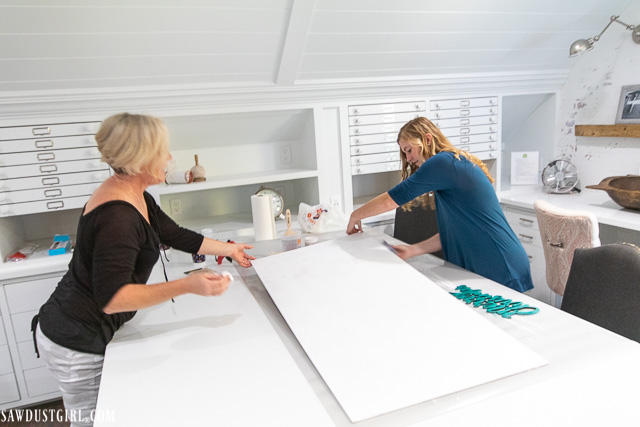
“What was the process of learning your body? Of what was too much?”
She takes a moment to think. “In 8th grade, I did not manage my health very well. There were a lot of flares back when I was first diagnosed. But now, I’ve kind of learned if I want to do something, like if I want to go out to brunch with my friends, then I can’t stay out late the night before. If I have a whole bunch of homework, then I can’t do other things. I have to manage my time a lot more than other people do and just really think about how much I’m doing.”
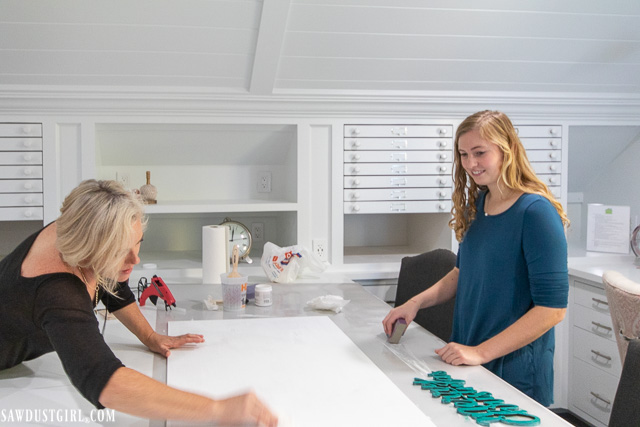
That’s something that a lot of people don’t do very well, myself especially.
I’m incredibly impressed that Claire has such an understanding of what her body needs, and that she can and does follow through with those needs. Even though I don’t have arthritis, that’s something I can definitely learn from Claire; listening to and taking care of my body.
“So, when you say homework, like just sitting at a desk doing homework? Well, actually, I know that is hard for your back, but like…” I trail off.
Claire jumps in. “Yeah, I can’t sit or stand for too long. There’s different levels of activity. Like, just hanging around at the house is this much energy, but I’m also a cheerleader so that is like a different—way more—amount of energy.”
“Yeah! I’m very curious about that!” I say. “Cheerleading seems like—which I’m glad you can do athletics—but what happens when you have a flare up?”
“I sit out. My coach is very understanding,” Claire says.
“So, your cheer squad…I’m assuming it doesn’t involve pyramids?”
“No, it does. I just don’t participate in that. I used to stunt, but this year my upper back has been hurting, and we thought my arthritis was spreading up my back, but my rheumatologist thinks it’s a muscle injury from my arthritis. Like, my back hurts, and I sit in a different position which pulled a muscle in my upper back. So I haven’t been stunting because of that.” Claire pauses. “My mom doesn’t think I should stunt anyways.”

“And stunting is doing flips and stuff?”
“Lifting. Like the pyramids,” says her dad. “They only go 2 1/2 high.”
“So, you can’t participate in that because if you have a flare up and have to sit out, then your pyramid’s missing?” I ask.
“And also it’s just bad for my back.”
No lifting, right.
Madison’s been taking photographs, but she chimes in. “It’s kind of a dangerous thing anyway, right?”
“Yeah,” Claire says, “really if you’re the flyer. They get dropped quite a bit.”
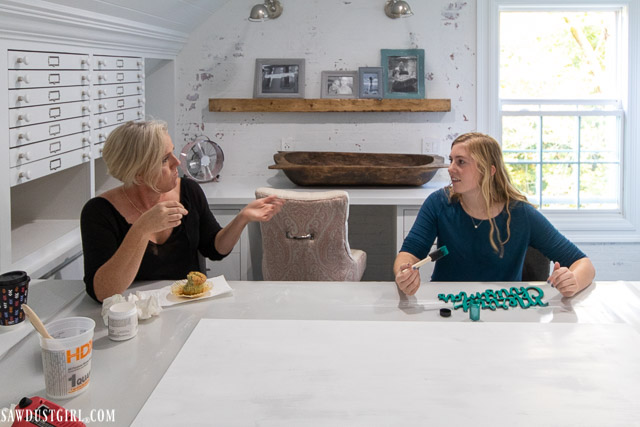
By now we’ve finished sanding and painting the board. Claire’s moved on to painting the wooden ‘Merry Christmas’ sign. The conversation has drifted towards who all gets arthritis, and the variety of ages that actually have it.
“One of the other honorees had arthritis in his knee when he was 2 or 3…but, they got it into remission real quick,” says Claire’s dad.
I ask, “And does your brother not have any arthritis?”
“No, he does not.”
“So, it’s not a genetic thing?”
“No, it is. I have 2 types: Ankylosing Spondylitis and Juvenile Idiopathic Arthritis. So, the back, Ankylosing Spondylitis, has a genetic defect that I have. So that one has a genetic correlation… It’s HLA-B27 (the gene). But, the thing is, you can have the gene and not have arthritis. And, you can get arthritis without the gene. So it kind of means nothing. In a way, it correlates, but it kind of doesn’t help you know if you’re going to get it. It just helps with the diagnosis. Like, I had the symptoms and the genes, and that helped them know.”
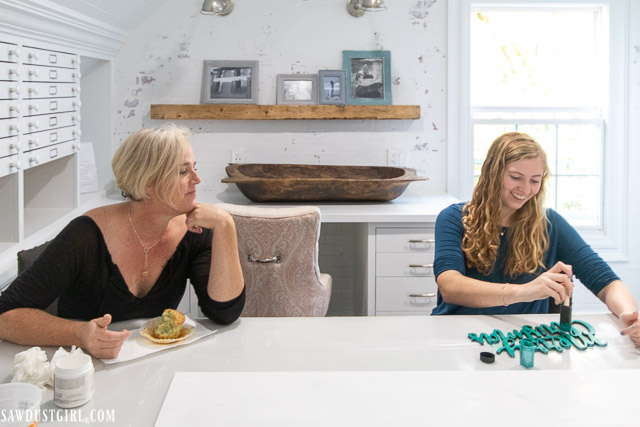
“You said earlier that they got the other kid’s arthritis into remission. Are there treatments for arthritis?” I ask.
“For osteoarthritis, they would just give painkillers and anti-inflammatories. But, if it’s systemic or rheumatoid, it’s not going to treat the cause, it would only relieve the symptoms. The goal is to treat the cause and put it back into remission, so you can go about your life until you have another triggering event,” Claire’s dad says.
“And what’s the abbreviation for the arthritis that you have?” I ask Claire.
“JIA,” she says.
“So, JIA, you can treat the because?”
Claire’s dad jumps in. He says he’s an accountant, but he’s got the terminology down so well he could fool me for a doctor. “Right, so there’s a couple ways you can do it. Chemotherapy, which knocks down your immune system or biologics, which the idea is there’s blockers which will either stop part of your immune system or your immune system will attack the blocker instead of whatever it is in your body.”
“Is that like the medication they use when you get an organ transplant?” Madison asks.
“Yeah. Actually, her mom was on the same medication they use for kidney transplants,” he says. Claire’s mom has arthritis, too, by the way.
“That’s really hopeful that you can treat the cause of at least some arthritis,” I say.
Claire’s dad nods. “Another treatment is like, a blood transfusion but you’re using the white blood cells. So, you knock down the immune system with one and then replace it with another. And the Arthritis Foundation supports the research to try all these treatments.”
We’ve moved on to gluing the twine onto the board and placing the clothespins on. The craft needed to be done in a few hours, so it’s not anything too fancy. I think it’s looking great though.
I asked them where they wanted to put the board (so we could know if they wanted to hang it vertical or horizontal), and a very cute and serious discussion about placement ensued. See below.
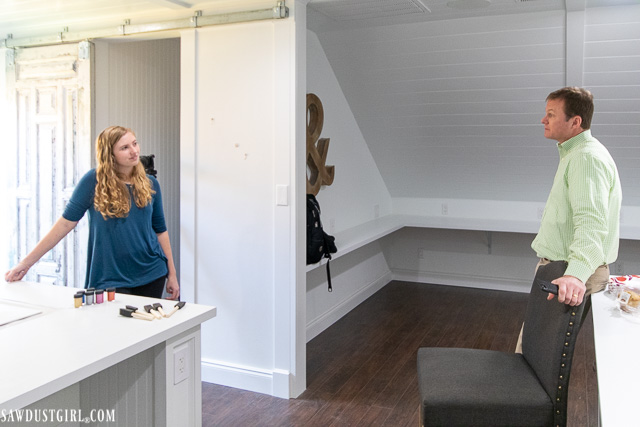
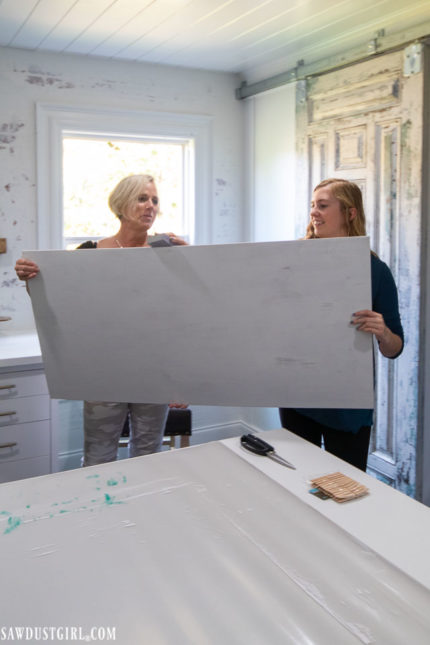
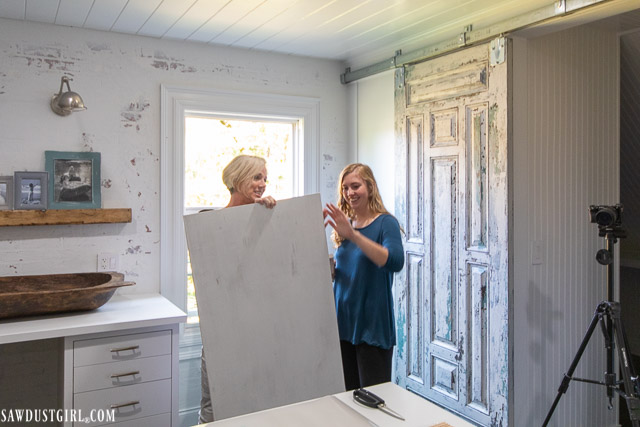
They chose vertical.
“So, I know you’re still a junior, but do you know what you want to do for a career?” I ask her.
“I kind of want to be a meteorologist. I’ve always loved weather,” Claire says. “There’s the normal job on the weather channel, but also, all cruise lines have one, airplanes have one, or Disney World. That would be cool too.”
“The people you see on TV are just 10% of the meteorologists. The government hires a lot, too.” Her dad adds.
We pause for a second, just to do a test to make sure this is the way they want it before the hot glue comes into play.
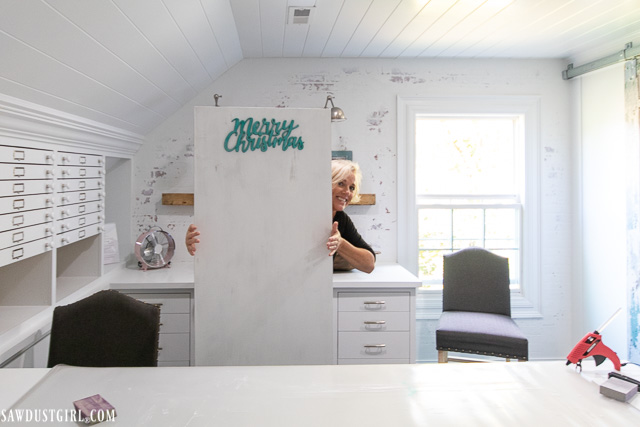
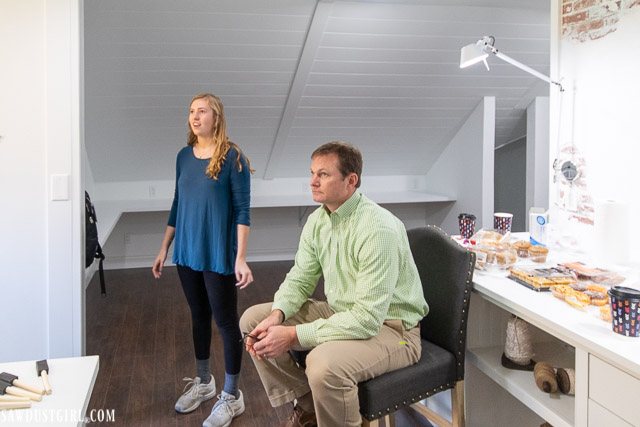
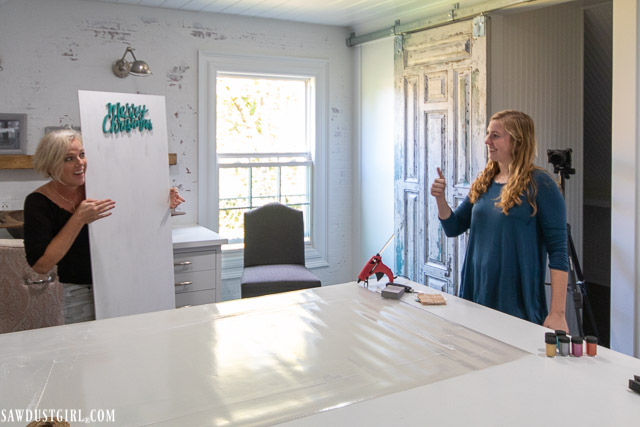
I ask her how arthritis affects her career decisions or plans for the future.
“Arthritis is something you always deal with your whole life. It’s not a take a medicine find a cure. It’s kind of…like Claire said, it affect her decisions,” her dad says.
“Yeah, like going to places. I can’t go to someone’s house if I have something the next morning,” she says.
“It’s about making choices. Knowing your limitations,” her dad says. He has an air about him that he is incredibly proud. The two of them seem really close, and I’m glad that their family is full of love and support for everyone. That’s really the best thing you can have in a family.
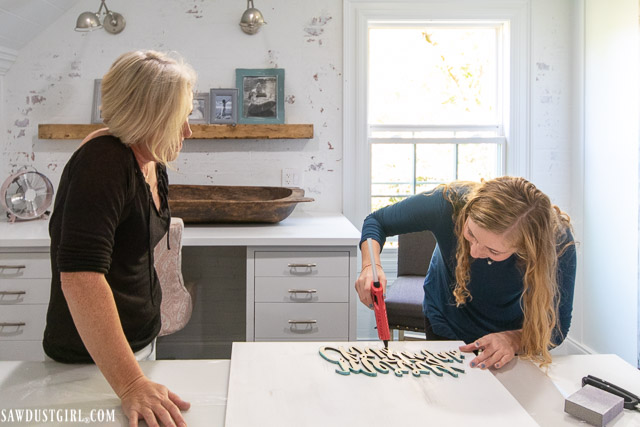
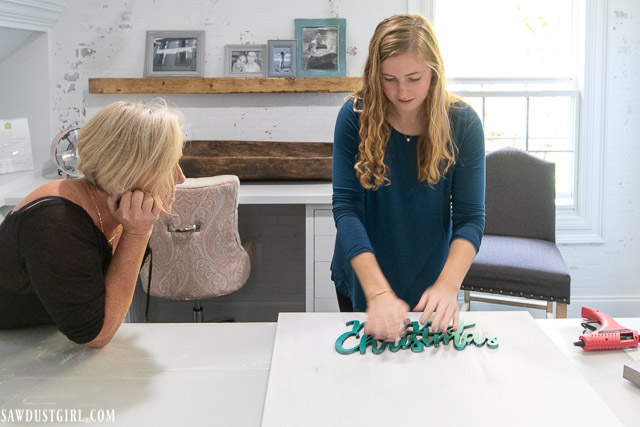
When I ask if there’s anything they’d like people to be more aware of, or a closing statement on arthritis, Claire’s dad says, “Cancer gets all the publicity and everyone gets on board—everyone knows somebody who has been affected by it.”
“They most likely know someone else who has arthritis; they just don’t realize it.” Claire adds. “Lots of people don’t realize that there’s 2 types of arthritis. There’s ‘you’re old and you have arthritis’ and there’s rheumatoid arthritis, where your immune system attacks your joints.”
I ask, “So all of the kinds of arthritis, they fall underneath those two different categories? The long ones that you said, the ones that I can’t pronounce, those are under one of those categories?” I was referencing her Ankylosing Spondylitis and JIA.
“Yeah.”
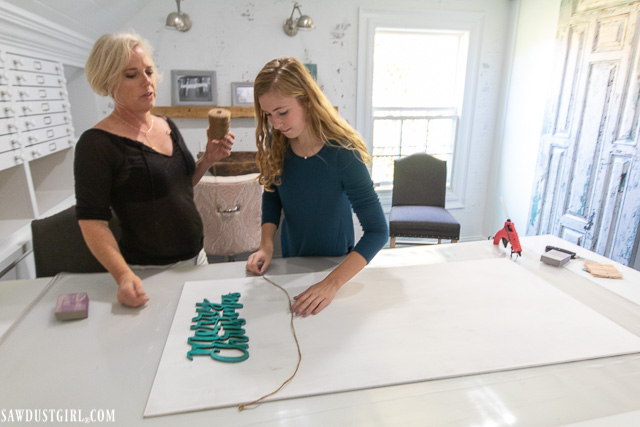
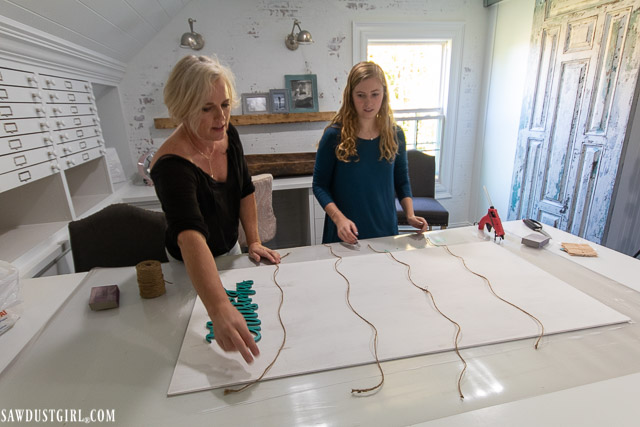
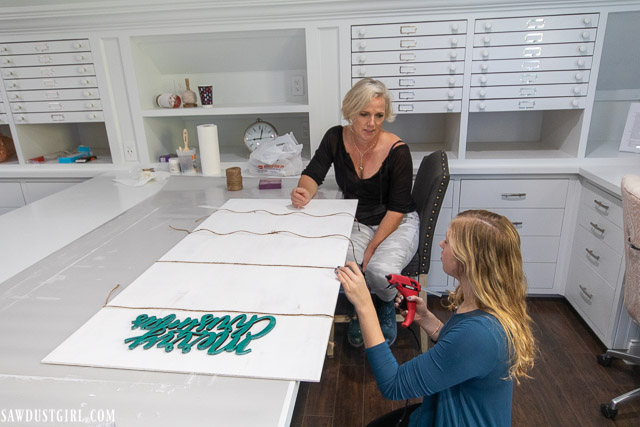
“Any other final statements? Food for thought?” I ask.
“Basically, kids get arthritis,” Claire says.
“Sometimes, when you see a smile on someone’s face, it doesn’t mean everything’s alright. Sometimes a smile is hiding internal pain or pain underneath,” Claire’s dad says.
“What do I do with that information?” I ask.
“I think it just means be aware,” Madison says.
“Yeah, just awareness,” Claire’s dad says.
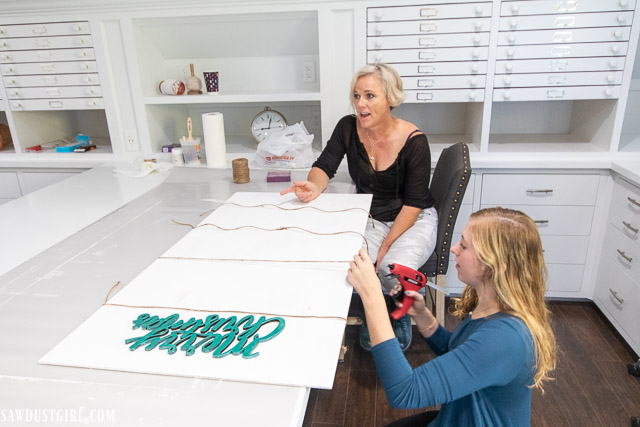
“So like, watch for wincing?” I ask again. I just want to know what I can do to help. Madison doesn’t appreciate my question and she lets out a strangled cry.
Madison is very concerned. “No, mom! What the—-“
Claire jumps in to save me. “Just, kids get arthritis, and we look ‘normal’. I look like a ‘normal’ kid. That’s what you’re saying.” She directs the last bit towards her dad.

He adds, “Yeah. Like, here’s an example. Ashley’s got a handicap parking tag.”
Side note, Ashley is his wife. Sorry, back to the story.
“So she parks in the handicap spot so she doesn’t have to walk long distances. She doesn’t have a walker or anything, and people will make snide comments about, you know, using the handicap spot.”
“Ooh,” I say. “That’s a very good perspective. I’m guilty of looking at someone ‘normal looking’ getting out of a handicap and judging them because I feel like they’re abusing the system. So that’s something that I’ll be more aware of.”
Madison jumps back in. “We all make snap judgements, but you have to fight past that. Because there are things we don’t know about each other.”
“Everyone has issues, whether it’s arthritis or not,” Claire’s dad says.
“Yeah, but people with visible issues get a lot more sympathy… I’m a big mental health awareness person. It’s the same thing; you don’t see it, but it’s a real issue. Invisible pain or discomfort is hard for people to understand. Like Claire said before, unless you have first or second hand experience with it, you don’t know. You just have to listen to those that do,” I say.
“And it’s so very different for each individual person, too.” Madison adds.
“Yeah, it is,” says Claire.
Her dad says, “Oh, absolutely.”
Christmas Card Holder
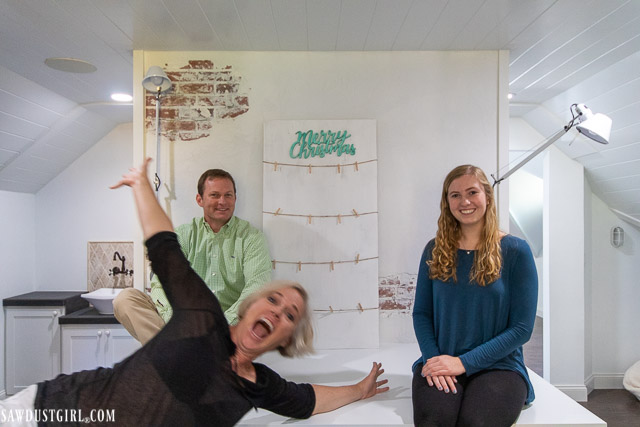
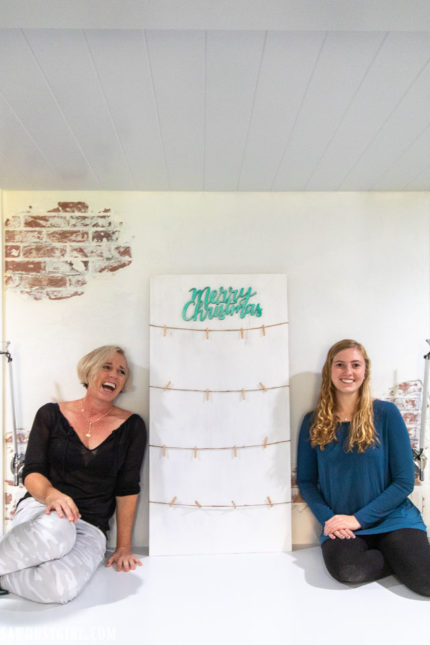
Also, side note, Claire was unfairly photogenic. I kept joking about how it’s hard to sit next to her because she’s got the perfect posture and I can’t even manage to get my knees bent on the counter! I ended up laying across the counter.
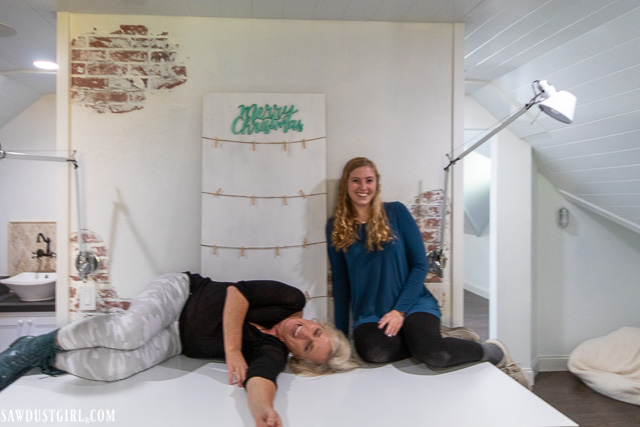
And almost hitting Claire in the face with my arm, but she moved just in time!
Getting to meet Claire and her father was an amazing experience, one that I will not forget anytime soon. They had such positive attitudes, not just about arthritis, but about life in general. I know that pain in any manner can make one feel grumpy or angry or any other negative emotion, but I really want to follow in Claire’s footsteps. Yes, a smile doesn’t always mean someone is alright, but it’s better than frowning, right? I want to look more brightly on things that make me want to complain; I want to look at how I can work to fix the problem, or at least manage it.
Arthritis Foundation
One upcoming event that Claire is focusing on is the Arthritis Foundation’s Jingle Bell Run. They are being held all across the country, so check on their website to find out more about one near you. All you have to do is show up and show support! Like Claire and her dad said, the Arthritis Foundation is trying to find cures for arthritis, and there are over 100 different types. More than 60% of Americans wouldn’t want to accept living with an incurable disease. Yet, arthritis doesn’t have a cure, and it impacts 1 in 4 Americans. By new estimates, 1 in 3 people age 18-64 have arthritis.
The Arthritis Foundation is the Champion of Live Yes! Leading the fight for the arthritis community.The Arthritis Foundation helps conquer everyday battles through life-changing information and resources, access to optimal care, advancements in science and community connections. Their goal is to chart a winning course, guiding families in developing personalized plans for living a full life – and making each day another stride towards a cure.
Moreover, their Live Yes! Arthritis Network provides personalized help and support to adults living with all types of arthritis and rheumatic conditions and parents or guardians of children living with arthritis. Their programs offer opportunities for connection, education and empowerment via Live Yes! Connect Groups, Online Community and conferences. The Live Yes! Arthritis Network, created by the Arthritis Foundation, makes connections both in person and online to empower people to live their best life. People with arthritis find strength in each other, manage stress and take control of their health care.
Take the Assessment
Share your voice! If you are affected by arthritis, please take this 10-minute assessment and share your overall arthritis experience. By sharing your experience, you’re helping the Arthritis Foundation get the valuable information they need in order to change the future of those living with arthritis.
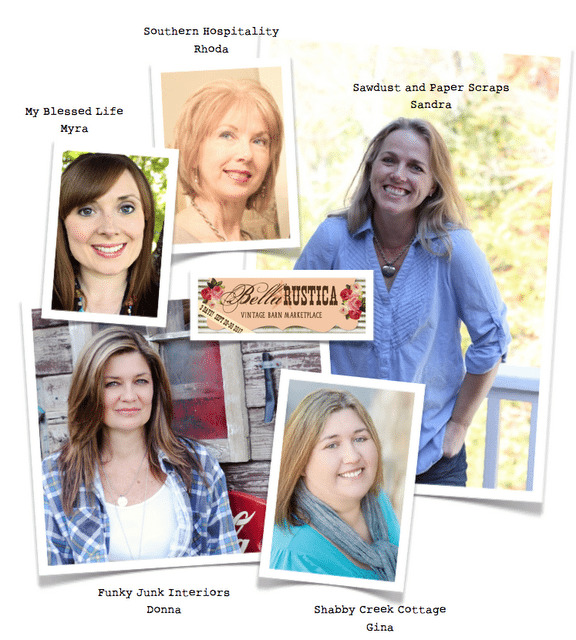
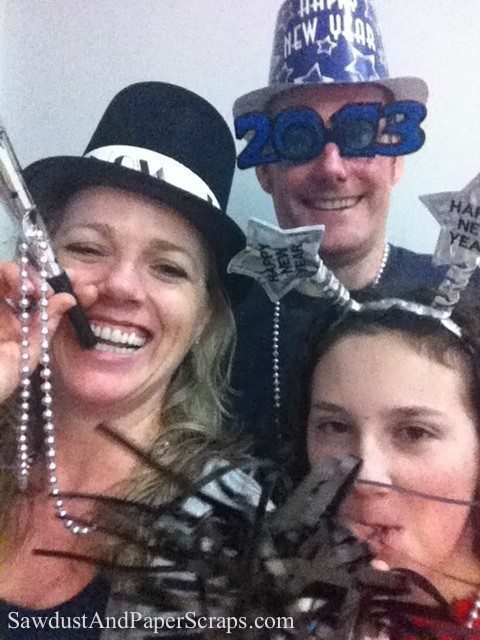
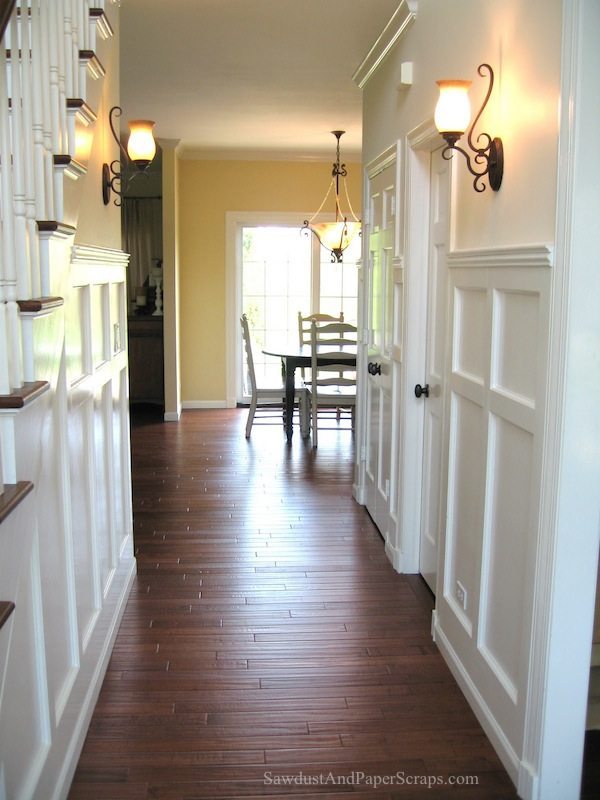

Growing up In upstate NY I had a friend with rheumatoid arthritis and she couldn’t come to school past November because she couldn’t handle the cold. Poor kid.
I had both my knees replaced this past June due to osteoarthritis.
I’m really glad you shared all this info about arthritis with us. So many of us suffer from one form or another.
Your craft room makes a gorgeous backdrop and you look gorgeous in it!
Thank you for a great and informative article. ❤️❤️❤️